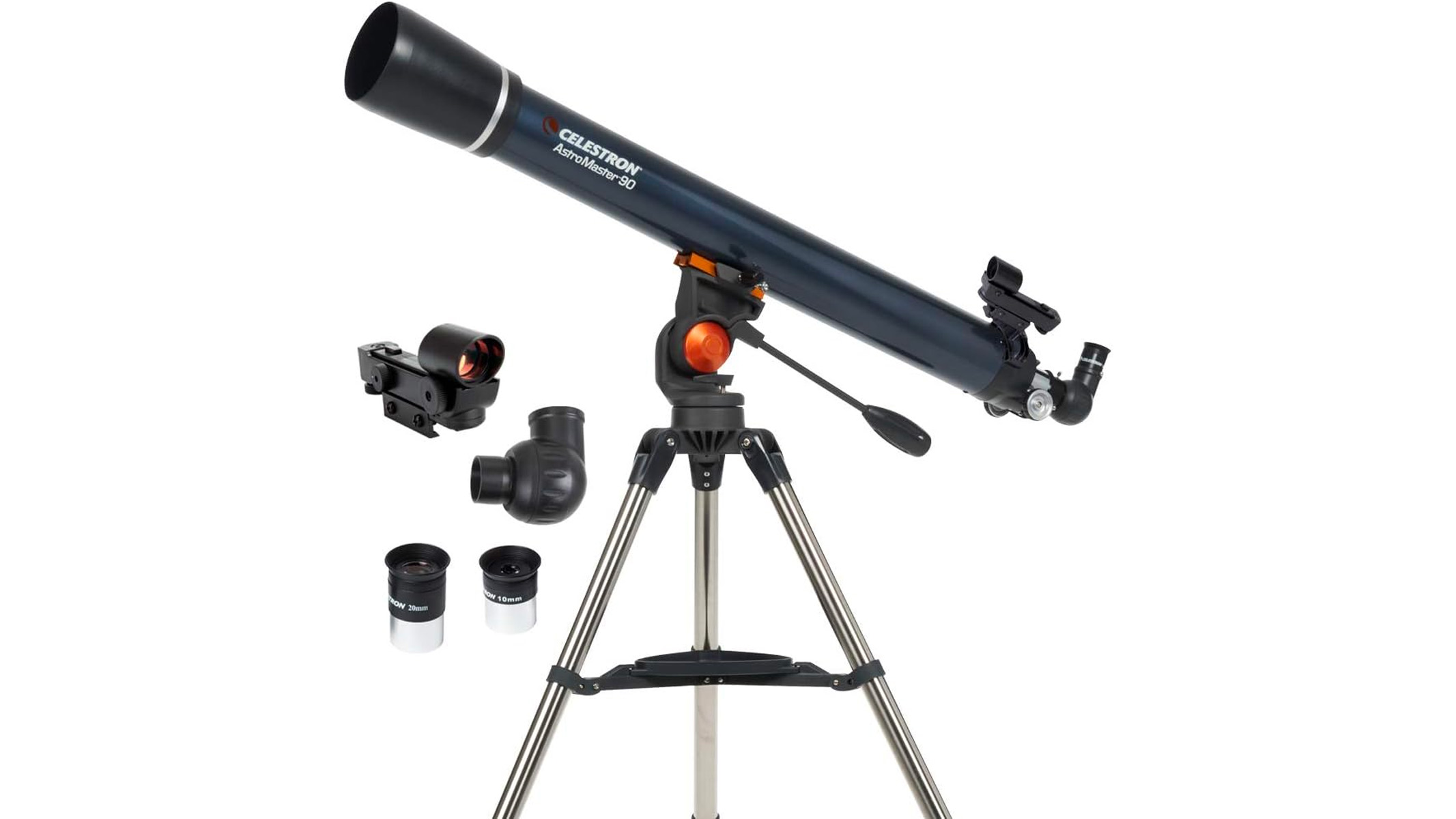Anti-Prime Day — Walmart is selling this amazing Celestron beginner telescope for just $78!
The Celestron AstroMaster 90AZ is reduced by $147 at Walmart, while Prime Day is over, the savings continue elsewhere.

If you're interested in starting your astronomy journey, here's a fantastic deal to consider. The Celestron AstroMaster 90AZ telescope is currently available for just $78 — but not in the Amazon Prime Day event — this deal is actually from Walmart. (And it seems to be from Walmart themself, not from a third-party seller). Every retailer seems to be showing a different 'was' price, but it's currently on the Celestron website for $319.95, so that's a huge discount.
This telescope, with its 90mm aperture, is an excellent choice for beginners who want to discover the wonders of the night sky, observe the moon and even seek out galaxies and nebulas.
We haven't reviewed the 90AZ, but we previously reviewed the Celestron AstroMaster 70AZ, which is a similar beginner-friendly telescope with a shorter focal length. If you're aiming for clearer, brighter and more detailed views of the night sky, the 90AZ is an attractive option. It can capture 65% more light than the 70AZ, making it an easy choice for improved stargazing experiences, especially considering the current discount.
Celestron AstroMaster 90AZ was $225 now $78 from Walmart.
Save $147 on a telescope that is simple to set up, provides detailed views of the moon, planets and nebulas, and is perfect for budding astronomers of all ages. We think it's one of the best beginner telescopes you can buy.
This kit comes complete with two eyepieces (a 20mm (50x magnification) and a 10mm (100x magnification), a full-height tripod, an erect image star diagonal, a StarPointer red dot finderscope, a smartphone adapter and a Bluetooth remote. It also includes a free download of their Starry Night Basic Edition astronomy software for interactive sky simulations.
Don't forget, if you want to make the most of Amazon Prime Day 2023, check out our Amazon Prime Day hub for a roundup of the best discounts and deals on telescopes, binoculars, cameras, star projectors, drones, lego and much more.
Key Specs: This telescope has pretty good specs for beginners and all-around use. With a 1000mm focal length, it's great for observing Saturn's rings, Jupiter's moons, galaxies and nebulas. If you're into astrophotography, this focal length works well. The 90mm aperture allows a good amount of light, enhancing your views. While it weighs 12.4 lbs (5.6kg), it's not the lightest but certainly manageable for most users.
Consensus: It's a great starting point, and we think you'd outgrow it after you've progressed beyond beginner status, but for under $100 it's a steal.
Buy if: You're buying for your kids who are into astronomy and don't want to spend too much in case they don't maintain the hobby.
Don't buy if: This model doesn't have any GoTo technology, so if you want something with a bit more oomph than traditional scopes, look elsewhere.
Alternative models: The Celestron Inspire 100AZ is a solid step up from the AstroMaster 90AZ, and it even has a smartphone mount, making it suitable for basic astrophotography. If, however, you want something more powerful to last you a while, we love the Celestron NexStar 4SE as it has some serious power and a GoTo.
For more of our favorite telescopes, check out our guides to the best telescopes, best beginner telescopes, best telescopes for deep space and best telescopes for seeing planets.
Breaking space news, the latest updates on rocket launches, skywatching events and more!

Kimberley Lane is a landscape & seascape photographer living in South Wales. Originally using photography as a way to cope with health issues, she aims to portray a feeling of calm and peace through her images. Her work has been featured in a number of national photography magazines.
- Jase Parnell-BrookesManaging Editor, e-commerce

